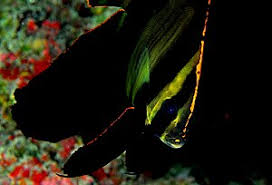The Evolution of the Dragon Symbol Through the Dynasties in Chinese History
The dragon is one of the most iconic symbols in Chinese culture, embodying a wide range of meanings, from power and strength to wisdom and good fortune. Over the course of China’s long and complex history, the dragon’s image has evolved significantly, reflecting changes in political, cultural, and philosophical contexts. Its symbolism has adapted to fit the prevailing ideologies and power structures of each dynasty, showcasing the dragon’s flexibility as a cultural and political symbol.
From the early dynasties to the modern era, the representation of the dragon has undergone notable transformations. In this article, we will explore the evolution of the dragon’s image throughout Chinese history, examining how its symbolic meaning changed and how it was used by various rulers to reinforce their authority and legitimacy.
The Early Dynasties: The Dragon as a Totem of Tribal Power
The earliest known representations of the dragon in China date back to the Neolithic period (approximately 3000-2000 BCE). In these early times, the dragon was primarily a totemic symbol of the tribes and clans. The dragon was not yet the highly revered imperial symbol it would become, but it was a creature associated with the natural world, often linked to water and agricultural prosperity. Many early depictions of dragons were found on jade artifacts, which were used by various tribes as symbols of power, prestige, and protection.
During the Xia Dynasty (c. 2070–1600 BCE), the dragon began to take on a more structured form in mythological and cultural narratives. In these early days, the dragon symbolized a protective spirit, guarding the land and its people. The early Xia rulers are believed to have used the dragon to symbolize their right to rule, as they claimed descent from divine beings. This connection between the dragon and divine authority would continue to grow in the subsequent dynasties, solidifying the creature as a central part of Chinese royal symbolism.
The Zhou Dynasty: The Dragon and the Mandate of Heaven
The Zhou Dynasty (c. 1046–256 BCE) marks a pivotal period in the evolution of the dragon as a symbol. It was during this time that the dragon became deeply intertwined with the concept of the Mandate of Heaven (天命, Tianming). The Zhou rulers claimed that their authority was granted by heaven itself, and the dragon symbol became a visual representation of this divine right to rule. The Zhou Dragon was often depicted in art, jewelry, and bronze vessels, serving as a reminder of the connection between the emperor and the heavens.
A significant development during the Zhou period was the use of the dragon in ritual ceremonies. Dragons were often included in religious and state rituals, symbolizing the emperor’s role as the intermediary between heaven and earth. This role as a divine mediator would be reinforced in later dynasties, with the dragon continuing to represent the emperor’s unique position as the Son of Heaven.
The Han Dynasty: The Dragon as a Symbol of Imperial Power
By the time of the Han Dynasty (206 BCE–220 CE), the dragon had become a clear symbol of imperial power. The Han emperors used the dragon to reinforce their legitimacy as rulers. During this period, the dragon was more formally adopted as the imperial symbol, marking a shift from its earlier association with local tribal and religious leaders to its use as a national emblem of the emperor’s divine authority.
The image of the dragon in Han times was often depicted as a powerful, majestic creature, embodying strength, authority, and dominance. It was during this period that the dragon began to be associated with imperial regalia, such as the emperor’s robes, seals, and thrones. Dragons were prominently featured on the emperor’s robes, often stylized with five claws, which was considered the highest form of dragon imagery. The five-clawed dragon became the exclusive symbol of the emperor, reinforcing the notion that only the ruler had the right to wield such divine power.
In addition to its association with the emperor, the dragon also symbolized good fortune and protection. The Han period saw a flourishing of dragon motifs in art, architecture, and coins, demonstrating the widespread use of the dragon as a symbol of prosperity and national unity.
The Tang Dynasty: The Dragon as a Spiritual and Cultural Icon
The Tang Dynasty (618–907 CE) represents a period of significant cultural exchange and development in China, as the empire expanded its borders and interacted with various foreign cultures, particularly those from Central Asia, India, and the Middle East. During this time, the image of the dragon became even more complex, incorporating elements from other cultures and traditions.
In Tang China, the dragon was not only a symbol of imperial power but also of spiritual and cultural significance. The dragon was often depicted as a celestial being, capable of bringing rain and ensuring agricultural prosperity. The Tang emperors, in particular, were known for using the dragon to emphasize their role as the central figure in maintaining cosmic harmony and ensuring the welfare of the empire’s people.
The Tang period also saw the emergence of the dragon as a symbol of wisdom and enlightenment, linked to the rise of Buddhism in China. Dragons were often depicted in Buddhist art, where they were associated with the protection of Buddhist scriptures and the Buddha himself. This marked a shift in the dragon’s symbolism from merely a political emblem to a spiritual guide, capable of providing protection and enlightenment.
The Song Dynasty: The Dragon and the Cult of the Emperor
The Song Dynasty (960–1279 CE) witnessed a further refinement of the dragon’s symbolic role in Chinese society. By this time, the dragon had firmly established itself as the emblem of the emperor, representing not only imperial authority but also the cult of the emperor. The Song rulers sought to strengthen their legitimacy by linking themselves more explicitly to the dragon, utilizing it as a tool to solidify their rule and reinforce their divine connection.
During the Song period, the dragon was often depicted as a symbol of control over nature. As China faced periods of both natural disaster and agricultural success, the image of the dragon as a bringer of rain and bountiful harvests was widely used to promote imperial legitimacy. The Song emperors, much like their predecessors, used dragon imagery to evoke the idea that they were the intermediaries between heaven and earth, with the divine mandate to rule.
The dragon also began to be depicted in smaller, more delicate forms during the Song period, reflecting the refinement and aesthetic sensibilities of the time. The dragon motifs became more intricate, often appearing in porcelain, silk, and lacquerware, reflecting the flourishing of the arts and crafts that characterized the Song Dynasty.
The Qing Dynasty: The Dragon as the Emblem of Imperial Authority
The Qing Dynasty (1644–1912 CE) marked the last imperial dynasty of China, and it was during this period that the dragon reached its peak as a symbol of imperial authority. The Qing emperors, who were of Manchu origin, adopted the dragon as a symbol of their rule and used it to legitimize their authority over China. The eight-legged dragon, a variation of the traditional five-clawed dragon, became the emblem of the Qing emperors, symbolizing their absolute power.
The Qing rulers also used dragon motifs to reinforce their authority over the natural world, presenting the dragon as a controller of the elements, particularly water and rain. The image of the dragon appeared on everything from the emperor’s robes to official seals and coins, further cementing its role as the symbol of imperial power.
During the Qing period, dragon imagery became associated with imperial ceremonies, such as the emperor’s coronation and annual sacrificial rites. These events were designed to showcase the emperor’s connection to the heavens and his role as the protector of the people. The dragon, in this context, was both a symbol of the emperor’s divine right and a powerful creature that governed the forces of nature.
The Republic and Modern Times: The Dragon as a National Symbol
With the fall of the Qing Dynasty in 1912 and the establishment of the Republic of China, the dragon’s role as the symbol of imperial authority ended. However, the dragon did not fade from the cultural landscape. In the 20th century, the image of the dragon was revived as a national symbol of China, representing the strength, resilience, and unity of the Chinese people.
Today, the dragon is still widely regarded as a symbol of China, appearing in festivals, sports events, and cultural celebrations. It has evolved from its imperial origins to become a symbol of Chinese identity, both within China and globally. While its political and spiritual associations have changed, the dragon’s central role in Chinese culture remains as strong as ever.
Conclusion
The image of the dragon in Chinese culture has undergone significant changes throughout the various dynasties, reflecting the shifting political, cultural, and spiritual landscapes of the time. From its early role as a totemic symbol to its adoption as the emblem of imperial power, the dragon has evolved into one of the most enduring symbols of Chinese culture. Its legacy continues to thrive in modern China, where it remains a symbol of national pride and cultural identity. The dragon’s transformation through the dynasties highlights its remarkable adaptability and its enduring power as a symbol of strength, wisdom, and good fortune.










